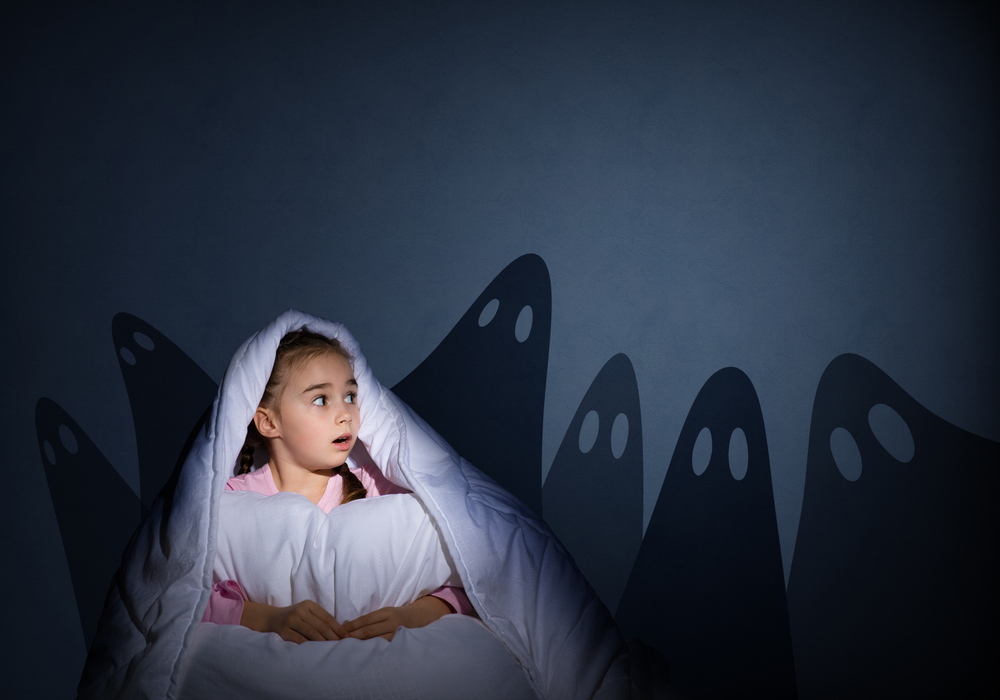The Real Monsters your Children are Worrying About this Halloween (Stress and Fears in 2019)
 It’s the month of scary costumes, excessive amounts of candy and spooky Jack-o'-lanterns. Halloween brings many monsters and most children believe them not to be true, but what about the real terrors your children might have, from natural disasters to everyday worries. A child is forever increasing their awareness of the world, the people in it and adjusting to bad things that can happen. Many of our children’s fears come out of things they have observed or experienced and as they continue to grow and become independent, they are less likely to depend on parents and carers which may harbour some worry. It is our job to be mindful that it may take more than tucking them into their fun kids beds and reading a bedtime story to stop them from worrying!
It’s the month of scary costumes, excessive amounts of candy and spooky Jack-o'-lanterns. Halloween brings many monsters and most children believe them not to be true, but what about the real terrors your children might have, from natural disasters to everyday worries. A child is forever increasing their awareness of the world, the people in it and adjusting to bad things that can happen. Many of our children’s fears come out of things they have observed or experienced and as they continue to grow and become independent, they are less likely to depend on parents and carers which may harbour some worry. It is our job to be mindful that it may take more than tucking them into their fun kids beds and reading a bedtime story to stop them from worrying!
For younger children, fear is often mitigated through connection with caring parents who make them feel safe and offer reassurance. When children experience separation as they get older their fears and worries can become apparent. As a child ages, they will need to find both courage and tears to face their fears. This growth can be cultivated with the help of adults they trust and can count on, and we have highlighted some points that may be of use to parents looking to comfort their children when it comes to stressful times and addressing their fears.
Connecting with your children
When children are worried, they look for support from their closest caretakers. Some of the best comforts we can offer is to listen to their concerns and acknowledge how they are feeling, in order to help minimise their fears. Talking about our worries can sometimes be enough, so give them your full attention and reassure them that you are there if they need to talk about anything.
Tackle fear head on
Kids are constantly interacting with the world around them and sometimes this may trigger a thought or feeling. If they are to become startled or show signs of fear, being able to turn this into a playful experience and tackle the fear head on can help to diffuse the intensity of the feeling or situation. Playing traditional games such as hide and seek, peek a boo, and telling bedtime stories that include risk and fear can introduce them to signals of fear and this way they may be less likely to kidnap their emotional systems.
Encourage them to be brave
Children 5 and under are sometimes less likely to demonstrate courage due to the lack of coordination in their brain when experiencing emotions and knowing how to deal with them. Younger kids can only fathom one intense feeling at a time and so fear can overwhelm them leaving them feeling frustrated. Children who are slightly older can be introduced to things that might be new or scary and we can encourage them not to let their fears take the lead. As responsible adults, we can help older children to express what concerns them. Inspire them to find their words for what worries them, this way it can help them to be courageous and face their fears head on.
Allow them to express emotions
When a child becomes fearful, they may want to cry and lash out as they do not know how to deal with breathtaking emotions relating to sadness or worry. Allowing children to cry will allow them to release the fear and give some resiliency in the face of their worries.
Adopt a good sleep routine
Sometimes night time can be when your child is most fearful and not even fun kids beds can aid night terrors. Being left alone in the dark can allow thoughts and feelings to creep into their mind and make them scared. By setting a bedtime routine for your child it prepares them that they will have to go to sleep soon. A consistent routine will allow for a smooth transition from daytime activities to the relaxed state of mind needed for a good night’s sleep.
Let us know how you help your little one deal with the worries and fears they may experience.



























